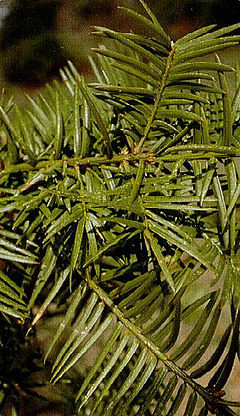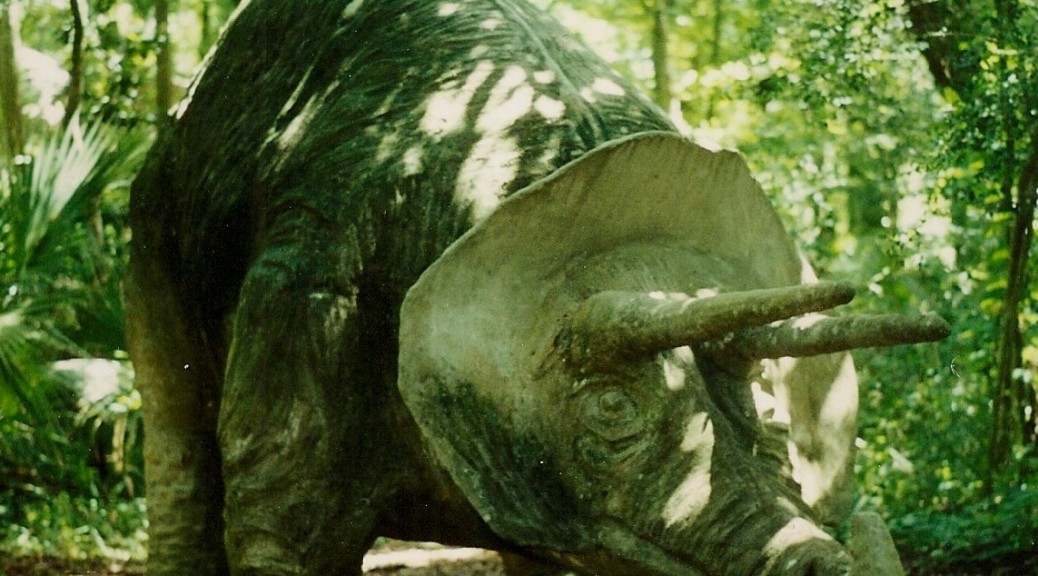-
-
FIRST A BIG HI to Pheonix Healing Spa (http://phoenixhealingspa.com/) where I attended a meeting on Essential Oils last night. I plan to go back: lovely ladies and facility.
-
 |
|
| Leaves of Torreya taxifolia |
Florida has lots of unusual things (some of them pretty weird) but did you know that we have tree that grows nowhere else. In fact the Florida Torreya (also known as the “gopher wood” or “stinking cedar”). According to STRANGE FLORIDA THE UNEXPLAINED AND UNUSUAL (Carlson) these “rare botanical species…range only about 20 square miles of North Florida (on banks of Apalachicola)” It resembles a yew tree and grow as high as 50 foot, producing a green plum-like fruit. It does however “give off a rather disagreeable odor (why it has the stinking nickname)”
I looked further and found that: “It is the type species of the genus Torreya. Torreya taxifolia became one of the first federally listed endangered plant species in the United States in 1984;…” I also found that it’s not quite true that they only grow in Florida…the area of growth is along the border and that “Torreya taxifolia is restricted to bluffs and ravines within Torreya State Park, along the east bank of the Apalachicola River in the Florida Panhandle and immediately adjacent southernmost Georgia. ” http://en.wikipedia.org/wiki/Torreya_taxifolia But still a very rare find.
Another natural phenom was Daytona’s Weird Wave. Seems that in July 3, 1992 a giagantic wall of water hit Daytona Beach without warning. “Frank Baldwin, a senior seismologist for the U.S. Geological Survey in Washington, said the wave, estimated at 27 miles long and 250 feet wide, may have been caused by shifting sands from an underwater landslide.” http://articles.orlandosentinel.com/1992-07-05/news/9207050499_1_wave-wall-of-water-roy-bennett
“…rogue waves – also known as freak waves, monster waves, killer waves, and extreme waves. These are relatively large and spontaneous ocean surface waves that occur in deep water, usually far out at sea, and are a threat even to large ships and ocean liners.” http://en.wikipedia.org/wiki/List_of_rogue_waves
In the 1992 event “The wave’s range was from Ormond Beach in the north to New Smyrna Beach on the south. The crest was 18 feet (5.5 meters) high and centered at Daytona Beach. Sailboats crashed ashore onto cars and many people suffered cuts and bruises from glass and debris. Two people required hospitalization and 200 vehicles were damaged. Seventy-five injuries were reported. http://en.wikipedia.org/wiki/List_of_rogue_waves
FLORIDA COLLECTIBLES YOU MIGHT JUST HAVE (and how about that store—click on duh…store above)
Skiing in Florida and Skiing up North Comic Funny Original…$15.95
Vintage Collectible Orange Blossom Fruit Florida Travel Souvenir …$29.67
Vintage Souvenir Metal Bok Singing Tower Florida $34.00
AND THEN THERE WAS THE THING. On November 30, 1896 the winter tides washed ashore the usual debris at St Augustine and something more. “Two boys riding their bikes on the beach discovered a gigantic mound of rotting flesh, a carcass of some marine animal weighting at least 5 tons.” (Strange Florida) ” The St. Augustine Monster is the name given to a large unidentified carcass, originally postulated to be the remains of a gigantic octopus, that washed ashore …near St. Augustine, Florida…It is sometimes referred to as the Florida Monster or the St. Augustine Giant Octopus and is one of the earliest recorded examples of a globster. …
“Enough interest was generated that the Smithsonian began receiving requests for samples of the monster…. in 1995, electron microscope and biochemical analysis indicated that the material was collagen from a warm-blooded mammal. In 2004 DNA tests applied to the St. Augustine….identified … as the collagen matrix that holds together . . . whale blubber….In slightly more than a century, science had confirmed what the two St. Augustine boys originally reported in 1896—that remains of a whale had washed up on Anastasia Island!” http://siarchives.si.edu/blog/saint-augustine-monster
“In South Florida, we have industrial cockroaches that have to be equipped with loud warning beepers so you can get out of their way when they back up.” Dave Barry


